Painting your banister is a simple and cost-efficient way to update your home, but it can be frustrating if the paint on your banister keeps coming off and you don't know why. We've looked into this and here's what we found.
There are two reasons why paint on banisters keeps coming off:
1. Poor surface preparation prior to painting.
2. Heavy traffic on the handrail causing wear and tear (especially if you have kids in the house).
In this post, we'll go over the best ways to prep your banister before painting to make sure you'll have a lasting finish. We'll also share some tricks to minimize the daily wear and tear of your banister so the paint will last longer. If you're ready to learn more, keep reading.
What Causes Paint to Easily Come Off?
Poor surface preparation is the most common cause of paint coming off your banister. It is important to make sure that you're using the right tools and techniques in prepping the surface. Here are the most common reasons why a banister's paint comes off easily:
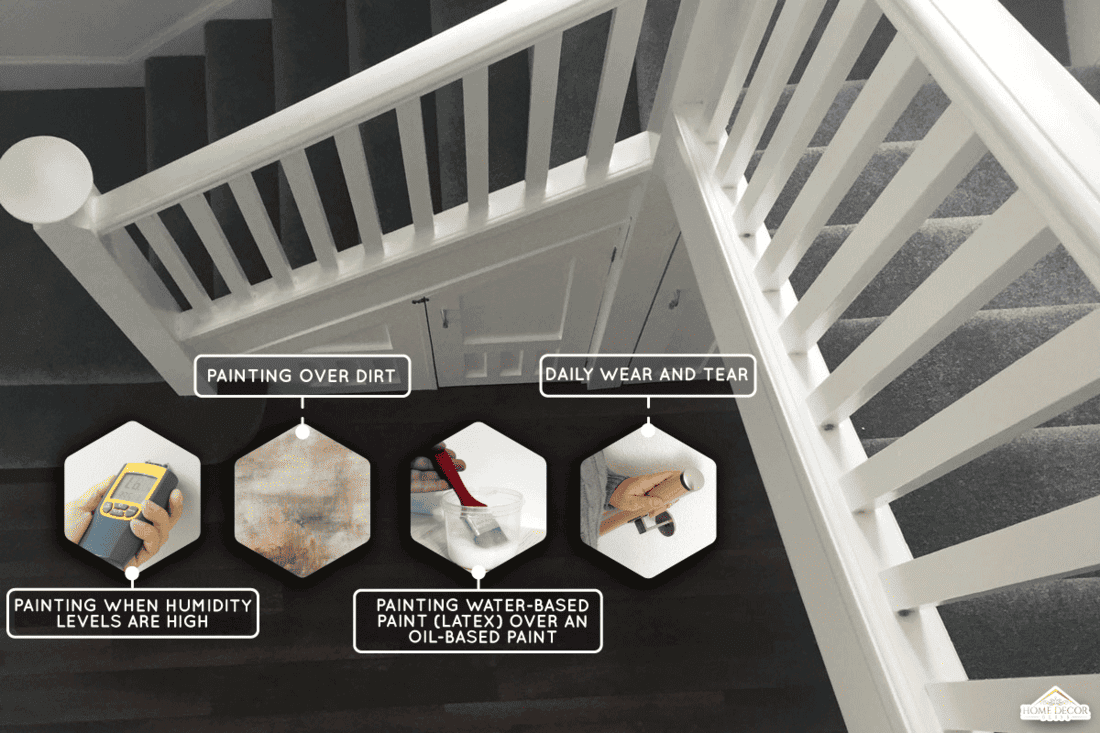
Painting when humidity levels are high
A paint that peels prematurely can be caused by a number of things. One of the most common ones is painting when the humidity is high.
Moisture can be present on your banister if your home has high humidity levels. The amount of moisture in your home may be due to weather conditions or inadequate ventilation.
Humidity can be tricky as it may be present on your banister without you being aware of it. Humidity can be subtle to the human eye.
In fact, even if you touch the surface, you may not notice that it feels moist unless you get a really good feel for it. This is why it's important to prep the surface even if it appears dry.
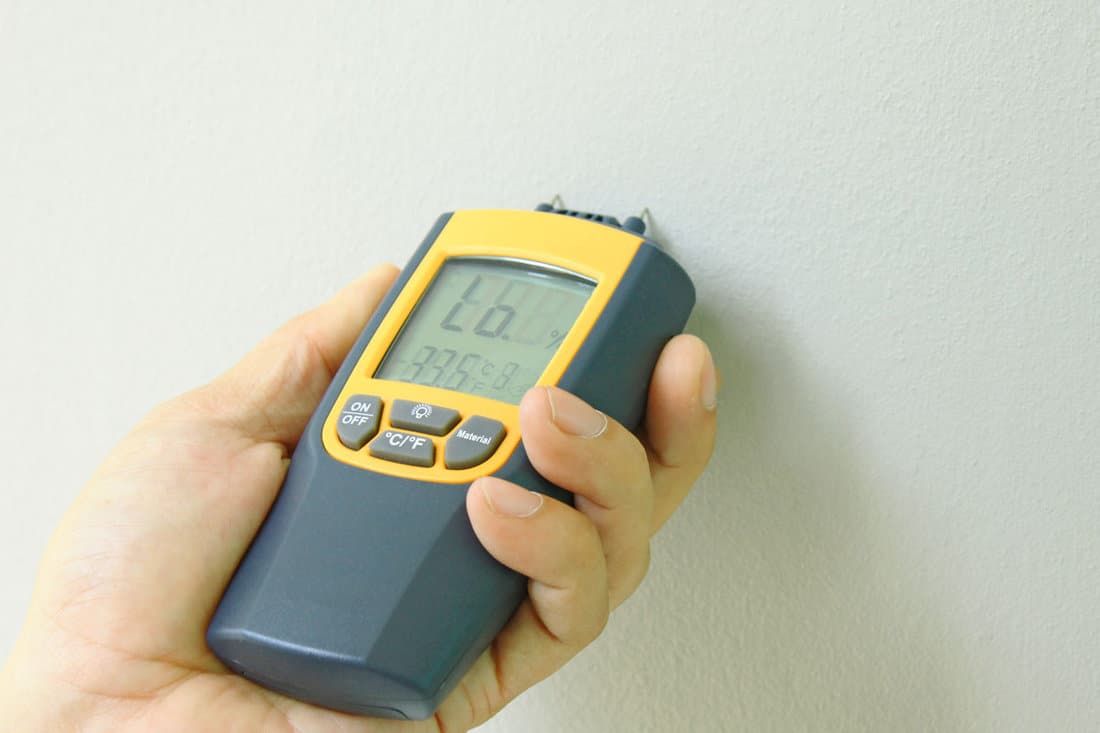
We sometimes add affiliate links and content that was curated and created by our team with the help of advanced ai tools to help showcase the best design styles.
Tip
Make sure you have a humidity level between 40% to 50% when painting to achieve optimal results. You can use a hygrometer to check the humidity levels of your home.
Check out this digital hygrometer on Amazon.
Painting over dirt
Painting over dirt is one of the most common causes of paint peeling prematurely. If you're painting your banister, you should thoroughly clean all surface areas before painting.
You should avoid applying the paint over any sort of dirt, grease, or sticky substances because it can cause the paint to bubble, peel, or lift off the surface when it dries.
Painting water-based paint (latex) over an oil-based paint
Latex paint over oil-based paint is literally the worst nightmare of professional painters. In this situation, the latex paint is just sitting on top of the oil-based paint with minimal to no adhesion at all.
Since oil and water don't mix together, it becomes much harder for latex paint to stick to oil-based paint and the water-based paint's adhesive properties are rendered useless. As a result, the paint will crack and peel in a matter of days, exposing the oil-based surface.
Here's what will happen if you paint latex paint over oil-based paint:
Daily wear and tear

The banister is subject to daily wear and tear. The amount of foot traffic will determine the paint's disintegration rate. However, if it's well-maintained, paint can last for many years.
The more household members you have at home, the higher the chance that the banister will require maintenance.
Tip
This may sound like a ridiculous suggestion, but you can advise family members to cut their fingernails regularly to reduce the risk of scratching and damaging the paint.
If you have children, you should also remind them to avoid playing on the banister as this could cause damage to the paint.
How to Prep Your Banister for Painting
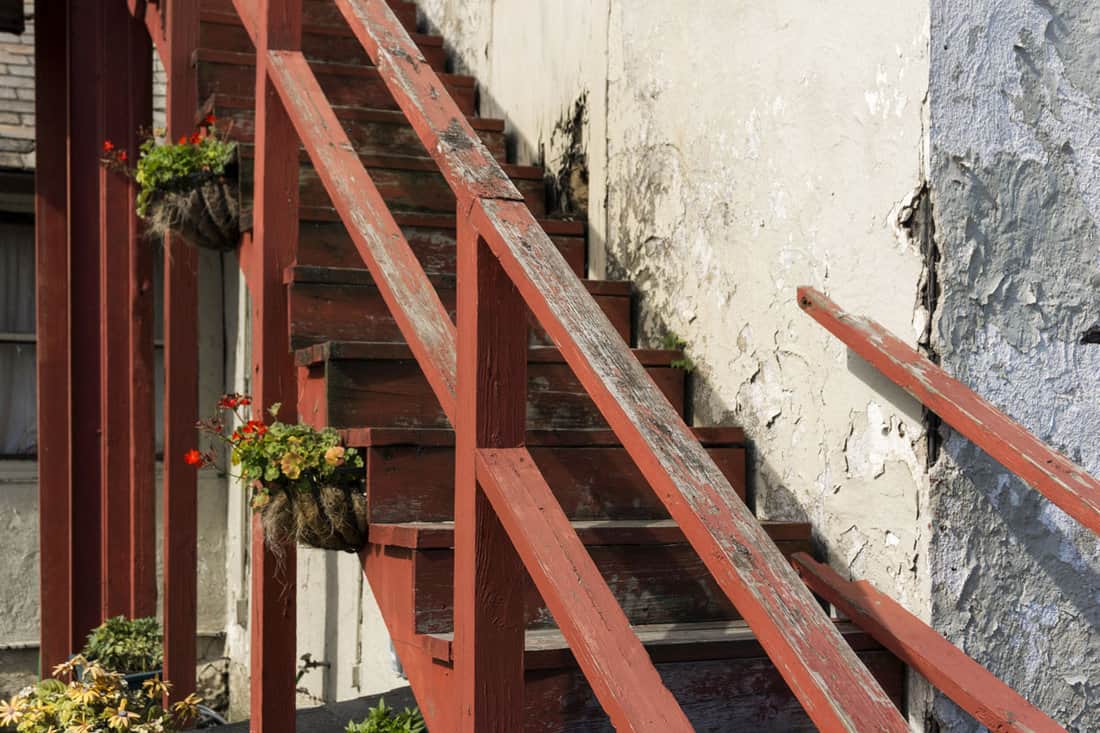
Prepping the surface of your banister is a critical step for the success of your project. You'll want to prep the surface so that it will absorb the paint and for the paint to adhere better.
If you have a wooden banister, good surface preparation minimizes the natural oils and tannins of the wood from bleeding through the paint. For a banister that is made of steel, aluminum, or brass, there is a slightly different approach.
Here are the most important things you need to do to prep the banister for painting:
How to prep wooden banister for painting
1. Identify areas you want to protect from the paint
The first thing you need to do is to identify the areas you don't want to paint. If they're going to be in the direct path of the spray paint or brush, then protect them with painter's tape.
Check out this painter's tape on Amazon.
2. Protect the floor from dripping paint
This may seem obvious, but if you have any paint that drips on the floor, it will stain your hardwood. To avoid this problem, use a dropcloth and cover the specific area of the floor which you think may get stained with dripping paint.
3. Sand the banister
Wood Banisters
Sanding is often used to smooth out rough spots and create a smooth surface that allows the primer to stick better. Use 180-grit sandpaper and sand lightly at first.
If you see any gouges or scratches that can't be sanded out, you can fill them with wood filler and sand them again after it dries.
Check out this wood filler on Amazon.
Banisters made from steel or any alloy
If you're working on a steel banister, you can use different kinds of sandpaper grades according to your specific circumstance.
A 120-grit sandpaper is ideal for removing damaged paint or sanding a newly-installed steel banister that is not yet painted. You can also use the same sandpaper grit to remove rust on the metal surface if there is any.
On the other hand, a 240-grit is great for roughening the surface of good paint. You do this when you want to prep the entire banister for repainting.
4. Wear a respirator mask
While it's not mandatory, wearing a respirator mask can help prevent inhaling paint particles and protect against breathing in paint fumes. A pair of gloves might also be helpful to prevent paint from getting into your cuticles or fingernails.
Check out this respirator mask on Amazon.
5. Apply primer
Primer is used to provide an ideal base for paint to adhere to. Apply at least two coats of primer. Let the first coat dry for at least an hour to a maximum of 3 hours before applying the second coat.
Choose the right primer for the material you're prepping to paint. Wood primers are exclusively for wood surfaces and should not be used on metal surfaces. They are designed to minimize the effect of wood bleeding tannins through paint.
Shellac primers are the most popular primer used for wood surfaces because of their ability to hold in the resins and prevent the tannins from bleeding through.
Check out his shellac primer on Amazon.
6. Apply paint
Once the primer is dry, apply at least two coats of glossy or semi-gloss paint (or any kind of paint of your choice). Allow each coat to dry before applying the next (between 30 to 90 minutes). Wood surfaces may require multiple coats as the paint will still fill in the wood grains and pores of the wood.
Can I Paint Over a Peeled Area of a Banister?
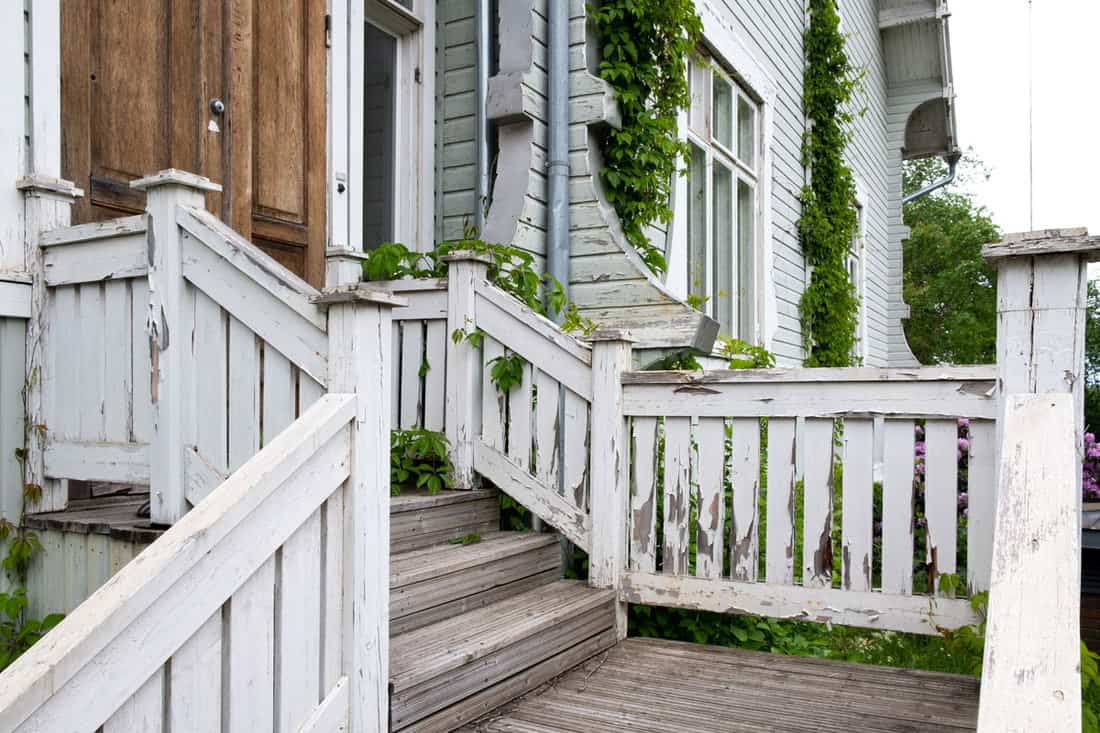
Yes, you can paint over a peeled area and patch it up. The most effective method to patch a peeled area is to scrape or sand off the peeled area completely until you reach the edges where the paint seems to stabilize in terms of adhesion.
Once the paint is removed, sand the surface of the banister with fine-grit sandpaper, using your finger to feel for any missed edges. Then, apply a coat of primer and let it dry. Once the primer is completely dry, apply two coats of paint.
Should I Stain or Paint Banisters?
There's always going to be a debate about which is better: staining versus painting. The decision comes down to the specific features of the home you're working in.
If you're planning on renovating an old house and want to preserve its classic, original look, then staining is likely the better option. However, if you're trying to create a more contemporary feel, painting may be your best option.
Painting is definitely recommended if you're doing some protective coating on wood banisters. Aside from the fact that it's cheaper, it offers more protection and doesn't easily chip off as a stain would. Painting also provides you with a wide selection of colors to choose from.
In Closing
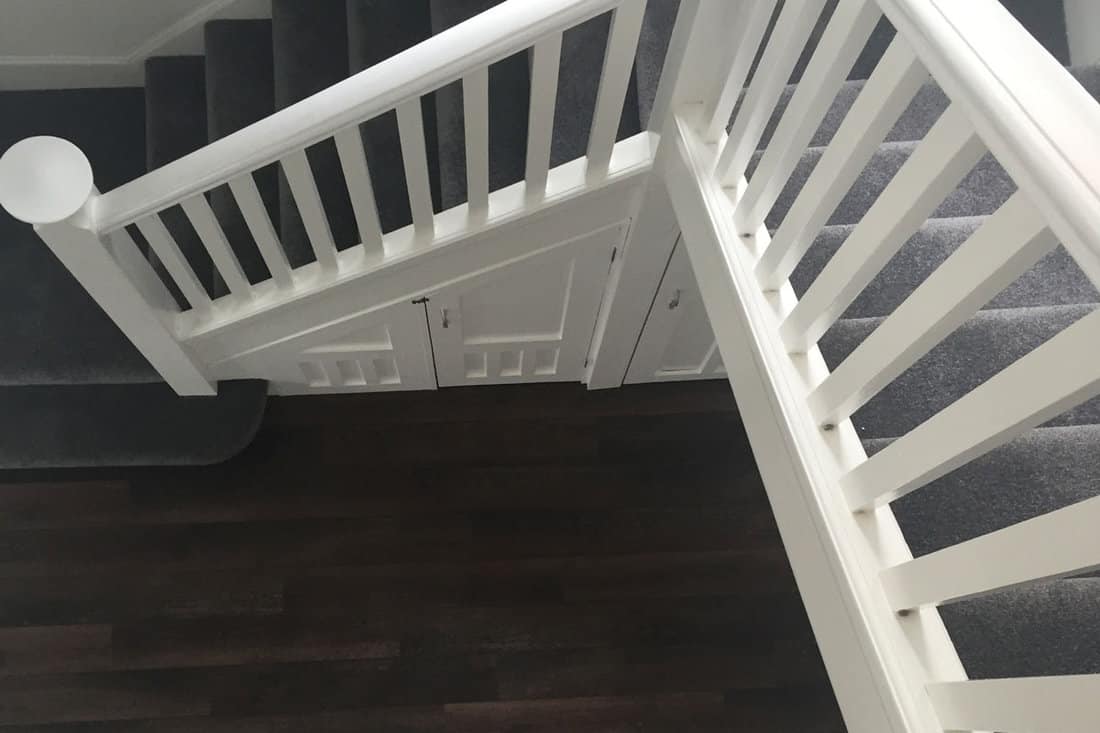
When it comes to painting your banister, make sure to prep its surface for a lasting finish by following our tips above. It's important to know that there are several different types of paint and finishes, so read all labels and test new products before you buy.
You might also like:
How To Clean Wood Stair Railings And Banisters
What Kind Of Paint Finish To Use On Handrails? [Inc. Tips & Tricks]





